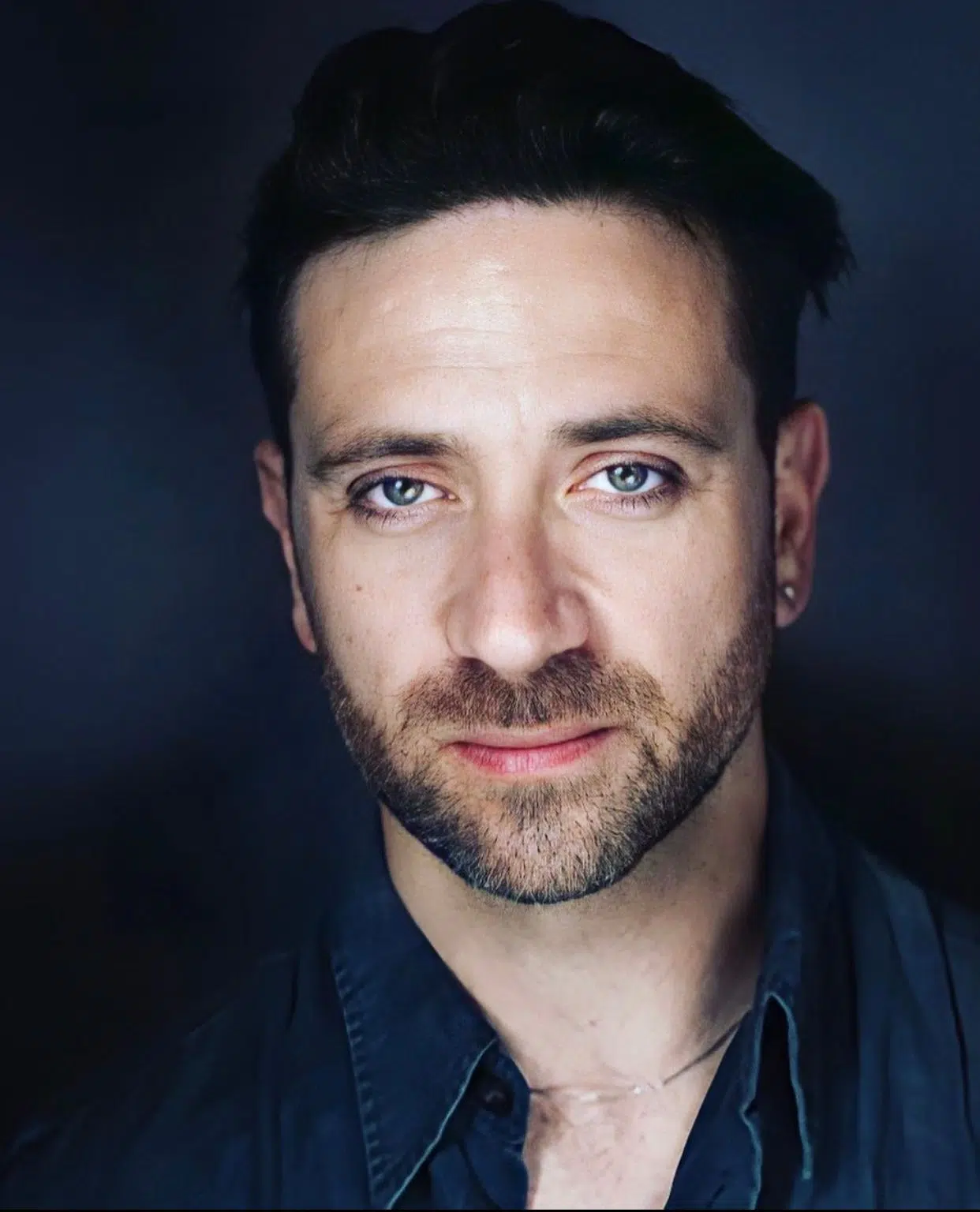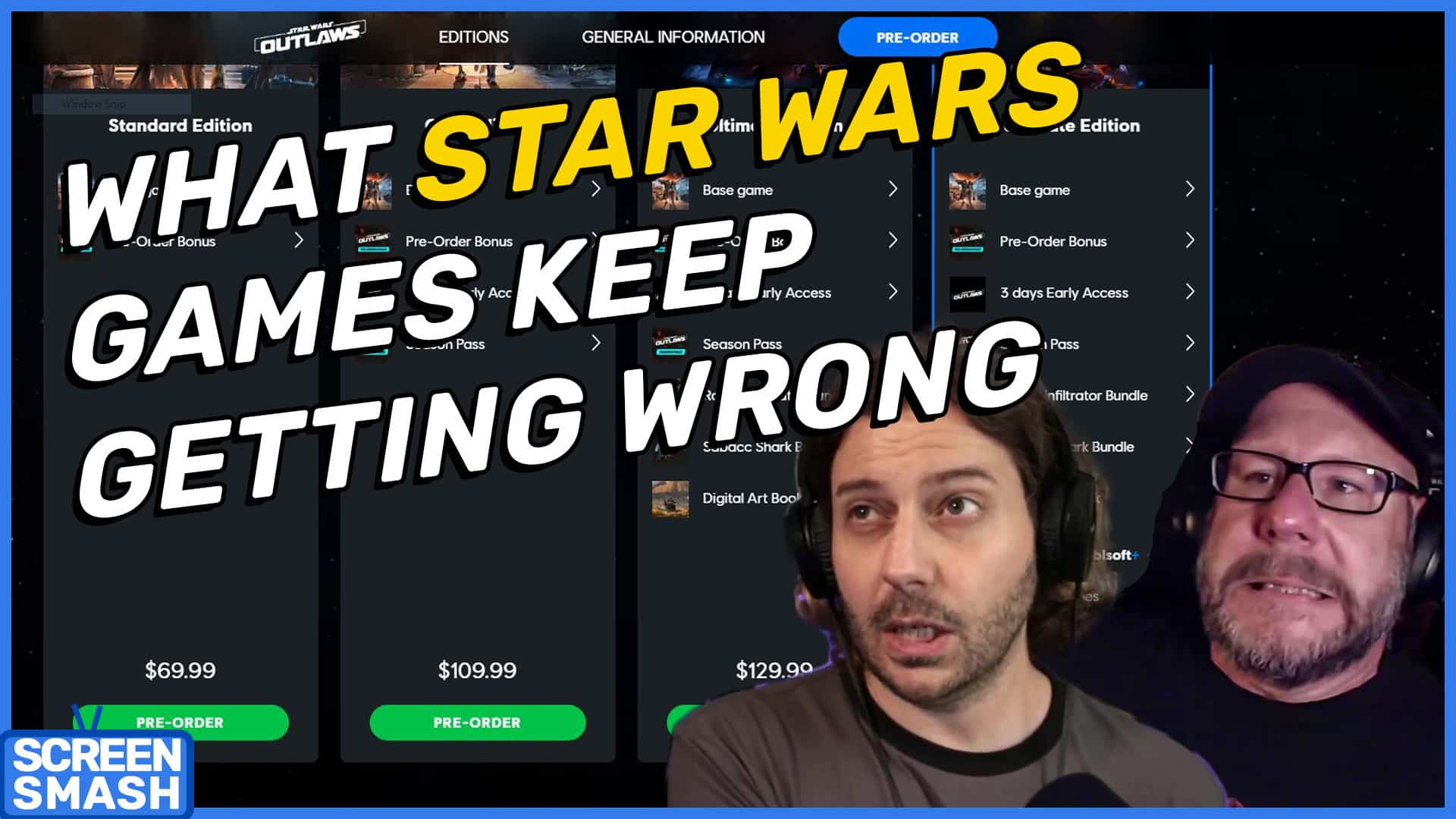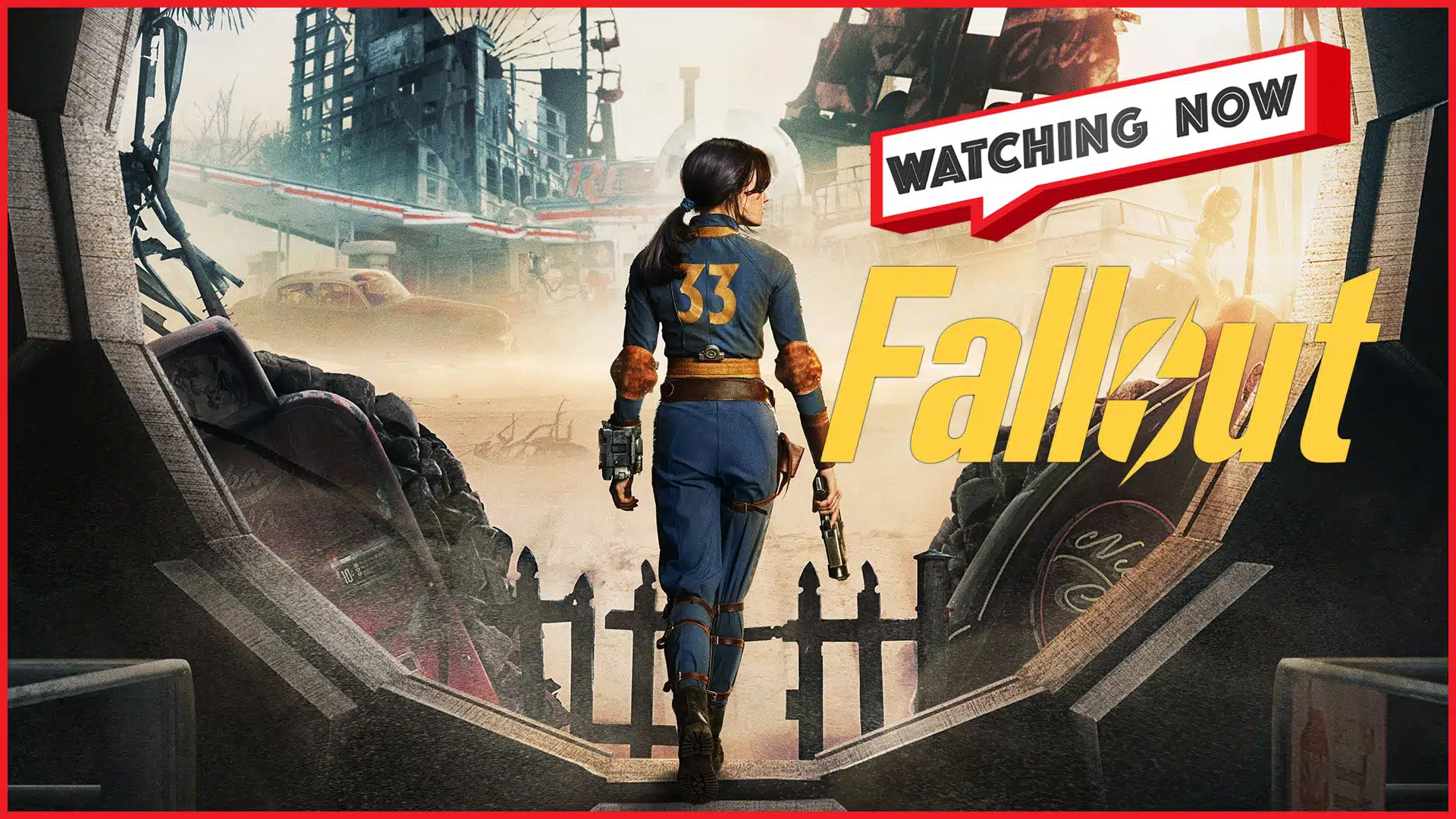
So Halo is pretty cool…(pause for applause)

As positive as I am that I could end this article there and everyone would agree, there is something more to why I’m taking up your time than that. I was given the wonderful opportunity to similarly waste the time of one Giovanni Lipari, the lead costume designer for Paramount+’s new show: Halo. Luckily for you, he isn’t a time-waster and gave me an exciting look on the inside of how the development of the suits for one of gaming’s most iconic badasses came about. I will be breaking the conversation into a narrative and explaining through paraphrasing and a lot of quotations what Giovanni had discussed with me. Because he and I are both talkers, and the conversation was chock FULL of information, the sheer size of this article would be able to fill a book if I just directly transcribed it. So, without further delay, let’s do this.

The first question:
I only met with Giovanni briefly before hitting the record button, but it was impossible not to recognize how kind and responsive this conversation would be from the start. Being the bumbling buffoon that I am, I quite literally stumble on my own words and somehow spew out something resembling the question, “Can you give us a general background of what you have worked on and things you are currently working on?” I promise you, it was not that coherent.
Giovanni, proficient professional that he is, begins his answer with an effervescent, “Thank you for having me! For me to talk about [the] Halo Project is also going back to a lot of challenging and lovely memories. It’s been one of the jobs and projects I have liked the most.” I immediately understand this man’s passion for his work. He is as excited as anyone working on something they once only dreamed of as a child. And Giovanni even states as much in the conversation. He reflects for a moment on how difficult it is to get into this line of work as a young aspiring person. He further accentuates not having much to draw on for something like sci-fi, comparing it to the classes he took on contemporary and period pieces that have history and data. Luckily for him, he has experience “with sci-fi worlds, in terms of materials and all this.” He also mentions having the video game to reference. However, he states, “sci-fi, and especially video game based, is a whole different world. That has been the thing that hit me the most when I got offered the job, which I was extremely excited about.” He finishes his thought, reflecting on his work in sci-fi before, with, “I found myself very comfortable at one point, and I thought, ‘I want to do more of it.’”

Giovanni began to speak about living all over Italy. He spoke about how important it is to move to places where the “action,” if you will, is happening to work in film. He likens where he lived to the “Hollywood” areas and has even moved to the states to work on projects. We joke about “going where they need you” to remain active and utilizing the travel to create networking for more job opportunities. This sparked new questions from me:
Is the production in Rome? And is that why you are living there? And how have you seen it work where people approach you to get involved in other projects from the set you are currently working on? (side note: I did NOT say this one that coherently, either)

“The production took place in Hungary, Budapest. A place where a lot of BIG productions are based. There’s a huge, beautiful studio. It could have been shot anywhere. They decided on Budapest because it’s very welcoming for the movie industry, and you can have a decent budget from putting dollars into that country. They have great, gorgeous facilities, starting with the studio. And this is a studio-based show.”
Giovanni explains that “you’d be surprised how much is NOT CGI,” and he is right. I’ll get back to this later.
I have to clarify the second part of the question because I apparently forgot how to speak. Anyway, I explained that I was interested in how networking works while on the production. Alluding to a statement he made that several people are working on other productions on one site at a time.
To my surprise, Giovanni starts with, “Thank you for asking this.” After I regain consciousness, he elaborates, “This is such a generic interesting question in regards to this industry… as a crew member, sometimes we are uneasy about not knowing where another job will come from”. After mentioning that this is not a subject many people like to discuss, he talks about how it’s easy to go from one day having thousands of emails to having nothing for a few months in this industry. Even if you still have the adrenaline from the last job you had.

According to Giovanni, the process of getting hired sounds relatively akin to most jobs. Sometimes you work with people you know, so it’s slightly easier and more comfortable. Sometimes you have to prove what you can do from the beginning and go through an interview process. What I found interesting is the necessity to move to where the work is needed. I was aware of this, but not to the extent like having to move to new countries, even. He stated that most TV productions are up to a year of work, with films being a few months.
Then, of course, when the pandemic hit, production on Halo was extended. But not everyone was affected the same way. “Season 1 lasted over two and a half years”. As I began to feel sorry for him, he immediately followed this with, “It was a beautiful time. We had time to think, which normally you don’t have… We had time to reconsider a lot of things and make it finer looking for viewers”. This may explain why the suit looks so gat-derned gud!
I am compelled to tell Giovanni that all his extremely broad answers give my ADHD-addled mind a large number of questions, but I would try to “focus” my mind. “I can think of an audition tape for an actor. What is the interview process for costume design?”


“The most difficult part of the job is getting the job, right?” I don’t know if I have ever related more to a question in my life. “Most of the time, they would ask you for something called a ‘mood board.’ A collection of images. Sometimes I would do images that are not even related to the dress. It can be garlic. It can be anything as long as there’s a color palette, and the textures, and sometimes material. It’s the feeling. It’s the mood on the show. They also want to know the reason why you put those images together.”

Giovanni explains that an interview is to see if the personality suits the mood of the show. I’m sure anyone would expect this, but it’s good to know that being a good person overall could have an impact on whether or not you get a steady paycheck. He gives an answer that sounds like something I’ve heard in the earlier episodes of Retro Replay from our very own Uncle Noly about accepting a “rejection” from a possible project, “we like you very much, but there’s one we like more at the moment. They have needs you don’t know about”. However, he does say that it can be odd being asked to show your thoughts on something you have absolutely no idea about. And man, I get that.
I felt I couldn’t hold back and asked the question I was most excited to ask (and possibly the only one I didn’t totally screw up asking). “What got you into the mindset that you can tackle, and for the record, you totally did, someone as iconic as Master Chief?”
“I love all of these questions because they go right to the point.” No, I didn’t need to add that, but he said it, and I’m still smiling. “I got a lot of references when we had a meeting with 343 {Industries} in Seattle. So we had something called boot camp. Which, for a second, I thought I have to have some physical training as a military soldier. Instead, it was a mental boot camp where they feed us all the information they feel we need to know, and they did it in a very gorgeous way. They gave us so many details and also generic information to let us do our business”. He likened what they did as an experience to bring the team up through the experiences 343 already went through because they wanted them to succeed as well. They want the Halo show to add to the success of the games overall.

Giovanni was given many books and pieces of lore to allow him to explore everything in the Halo universe. He did play the games and experienced what he could to better “understand what I was facing.” Giovanni attests that his lack of “feeling too much pressure” comes from not fully knowing every aspect of the series. He explains that it gave him the freedom to explore other aspects of the universe Halo lives in instead of only adhering to what the games showed. He fully gives credit to the boot camp for helping bring him to a place where he understood it enough to know what the director was looking for. All this before getting into the game itself, and by his own admission, “I did it when I was ready. Challenging? Yes. But I got so passionate about the script, and what they wanted to do with that”.
(SPOILER WARNING if you somehow haven’t heard about the controversial decision that was made in the early episodes of the show and would prefer to watch it without ANY information whatsoever, skip this paragraph altogether)
This brought Giovanni to the subject of the face reveal. He tells me that back in 2018 when they first discussed the show, the studio knew that they would make people angry with the face reveal. He also says that this is what made him respect the show, even more, adding that it was trying to “tell the story we want to tell.” I agreed with him on the subject. I likened it to Doom Guy and Chell, saying that “you don’t need a face, or a voice even when you’re playing because you are the face. So unless you put my face in the helmet when you show Master Chief’s face, there was no way you were going to get my image of him perfectly”. Giovanni summarizes what we said with, “these are two experiences. (to the gamers) Mine stays mine. And this is one we do by watching someone else. But you can still keep it yours for yourself”.
(END SPOILERS)
I explain that I have very small amounts of experience in action filming, but comparing it to the design for someone “like a Spartan, what kind of materials are you using? I know there is a difference for the action shots vs. the stand-still shots. Is it relatively the same material? Is it COMPLETELY different? You said that there is very little CGI; is that because of what you did with the costumes? What the HELL did you do to get it that good and that moveable? Batman didn’t even have that, and we’ve had 30 years of Batman movies, for goodness sake”.
I give both of us a moment to digest all the words I just almost yelled at Giovanni while nerding out about space costumes. I didn’t even realize his smile of pure elation. “The fun part is you ask questions as if you were there. So I need to start checking where you’re hiding. You really nailed it”. I thank him through bellowed laughs. “The armor which is Master Chief mainly but all the other three, the two ladies and the gentleman, they all had different armor. They had principal photography armor and the stunt version. So the stunt people had the same.” Giovanni goes on to explain that the more meticulous armor for principal photography is still moveable enough for the actors to perform simple movements but isn’t as flexible or repairable as the stunt armor. “We had a team that would replace [the armor pieces that broke] straight away… the principle photography material was flexible on certain points, but it needed to be hard on the first surface because that’s where all the coats of paint goes to make it that kind of heavy resistant metal… In fact, we made several samples of the points we needed to give more metallic paint for when we were outdoors”.


So now I know that lenses can pick up whether materials are “metal enough” or not and look like plastic. I had no idea the level of detail involved with the materials. At this point of the conversation, I knew I had gotten to the most passionate crevice in Giovanni’s soul as well. He spoke so enthusiastically about the materials and the different types they used, and I couldn’t help but eat it all up just as feverishly as he could deliver.
“The stunt version was made of more elastic material that would bend easily but was not as good to look at. But it would ease performances.” There are sections of action where the stunt coordinator had them take off the pieces of armor and then replace them after the shots. A detail I never knew about big action set pieces. These moments where they would, for example, have one leg armorless, the leg would have CGI armor, explaining what he meant that “you’d be surprised how little CGI was used” in the armor. According to Giovanni, “We had around 20 armors made for Season 1”. He answered my next question before I could ask it. For each cast member, “three good ones, and two performing ones.” According to Giovanni, the studio put a good amount of investment in the armor.

Giovanni also specified that the schematics he received for the suits only included the over armor. He had to come up with the under armor for the performers. This included material and style that would allow them to attach the outer armor to the actors and something that would allow them to breathe either with or without the hard armor pieces. And with Giovanni being Giovanni, he even included how the suit would use a liquid system that heals the Spartan after receiving an injury from enemies. He was very proud to point out that the actors liked the under armor so much that they were featured in the show much more than originally planned.
Final question before the final questions:
I remind Giovanni that I have a few questions from some people I know that I would ask at the end, but I had one final question I had written down in my mind that I wanted to ask first: “Do you have one story about the production that you want to tell people? Funny or serious. Like did the suits do something unexpected at any point?”.
Giovanni stepped right into it with, “First of all, I would never have expected them to have been so successfully welcomed on set. Like seeing them, the four of them, that first day walking on set, there was a moment the crew stopped working to say, ‘Jesus, they’re here.’ So you could feel that. And that was something absolutely unexpected. I was fearing that day that something would go wrong. Instead, there was absolutely a huge welcome. When you see them all together walking, that way you can feel their presence. That was unexpected”.


“One other thing, on the other hand, they had a real hard time finding a place to sit anywhere; they were really wide people. They couldn’t find ANY chair they could sit on, so they were having to stand up all day. The production purchased some huge, something you can only find in the U.S., like a swimming pool chair. They couldn’t sit anywhere; they were too big. They would carry their chair with them. There were a lot of those little things. Like if they tried going into the fitting room, they couldn’t fit in there. They couldn’t fit anywhere. They were too big. They were too tall. So they needed to make a green area for them to be welcome in”. Giovanni further explains that the actors were already very tall, but they needed to make them taller. So they quite literally were too large to fit anywhere comfortably. Their height also made it difficult for them to cast the characters. Being a “short guy” (5’7), I just suspected all Hollywood types to be a natural 7’13.
Friendly fire questions:
“Emmanuel Alejandro asks: What is your favorite non-Master Chief costume in the show?”

“My favorite, normally, is always the ones that come out with the least of a struggle. I think Makee, the lady who is the junction between the worlds of the aliens and humans, was the most challenging to achieve, avoiding falling into regularity, something we’ve already seen. And I don’t know if we achieved it or not with unseen things. We were asked to make this character a junction between the worlds and the cultures. [She’s] something I am pretty happy about. I think we nailed telling the story of that character.” Giovanni describes some of the other clothes from the “normal” humans and how much he loved doing that but clarified his favorite as Makee. I tell him I want to get into the details of the humans as well but that we’d most likely end up talking for another few days as a result.
“Mark Alvarado asks: As far as cosplayers, do they influence or inspire any designs of yours?”
Giovanni gives a huge smile. “It’s the sweetest thing ever. I have such warm feelings for cosplayers. They are amazing, and I didn’t even know at the beginning there could be such a thing. But when I worked on a show called The Badlands a few years ago, a dystopian show, I literally received emails and contacts asking me if they were doing a good job with their works in progress. Asking me if I had any suggestions. They were the sweetest things I ever saw. Considering I was doing these costumes in a rush and I was thinking of just the right amount to hit deadlines and all of a sudden, I see them doing it. And they did it in such a great way with whatever they had available. They hit such a huge level of similarity. Since then, while at work, even if I run fast to make deadlines, every now and then, I think about it. I think about it and say, ‘Let me do it in a way they can do that again”.


“I have one more from our friend Erika Aundawyn; actually, she has two: One of them is to tell you that the Spartan butts look amazing.” It takes a solid couple of seconds for this to hit Giovanni, and he gives out an amused chuckle, then clarifies with the simple question, “Butt?” I confirm this and continue, “She continues to say ‘Honestly, tell him Thank you from me.’ {She’s} new to Halo, and the costumes ‘make or break’ a show. The armors are such beautiful work and created a realism that {she’ll} be forever grateful for”.
“That’s lovely to hear from a new Halo fan. The creatives wanted to achieve getting as many viewers who had not as big a background in Halo but who can like this kind of show as well. You don’t have to be into the game specifically to like it. They wanted to make sure people would sense the feel of it. And make it very realistic. The one thing they told me, which surprised me at the time, was not to make it too big of a futuristic sci-fi. Let’s make it a sci-fi canon for what has to be canon but for what is not, necessarily; let’s make it as warm and as earthy as possible… They really wanted a visual to respect feelings that we can ACTUALLY feel nowadays. Let’s not go too far into making a new shape, hairstyle, or makeup because we’re in the future. Let’s make a future we can understand”.

I put my own two cents in while agreeing with this sentiment, “For me, I think that’s what made Halo so well received in the first place. A crazy sci-fi universe with a certain amount of dimensions we can all relate to. It’s easily accessible, jumping into and already knowing how things work. You have a gun, shoot, and you put in a new clip. Then you get the things that are literally out of this world. To see it taking its place in a new medium so naturally, I appreciate how it’s going and can’t wait to see more of it. Seeing how happy you are and excited you get to discover alongside us because this is a part of the world that we don’t know yet, either. So we are all discovering this together. I’m so happy to see that you are as excited about it as we are. I can go on for days, obviously. I have to thank you so much for your time. If there is anything you have left to say to close us out, please say it now”.
“What I would like to say is whoever feels somehow, and I use this word, not in a good way, ‘betrayed’ on having to witness something that was not exactly what they thought it was, I would say keep the point of view on seeing how things develop. The feeling you receive from that. If you can switch into this new experience, you might find something interesting. And if it’s not, it’s not. I would say I wish everyone would enjoy it as much as it’s enjoyable or close to it. Whoever is not going to like it is not going to like it. As a crew member, we really enjoyed it. I can say now, I will never be able to work for two and a half years on a project. It did not become a job; it became two and a half years of my life. It will stay extraordinary and important. It’ll stay something that I’ll remember. And I’m very happy about that. The outcome of it is a gorgeous feeling. If that can become more by watching it, then it’s all achieved. Thank you for having me”.

We exchange pleasantries on Giovanni’s exit. I breathe a sigh of relief, mostly for not saying something so stupid it offended him. Giovanni left me with an energy I usually only get from people in the same room as me. His almost childlike happiness for his work is infectious. His kindness is infectious. His happiness is infectious. I still gush when I watch the interview thinking how easy it would be to work with someone like him. Knowing his talent is where it’s at makes me hopeful for a day I may get the opportunity to, as well.
To Giovanni Lipari and the team working on Halo, thank you for your hard work and dedication! It most certainly didn’t go unnoticed nor unfelt.
What questions would you like to have answered from people working in film? We get some pretty amazing interviews here on Couch Soup and would love your feedback. Hit us up in the comments, and you may see your question in a future article.



